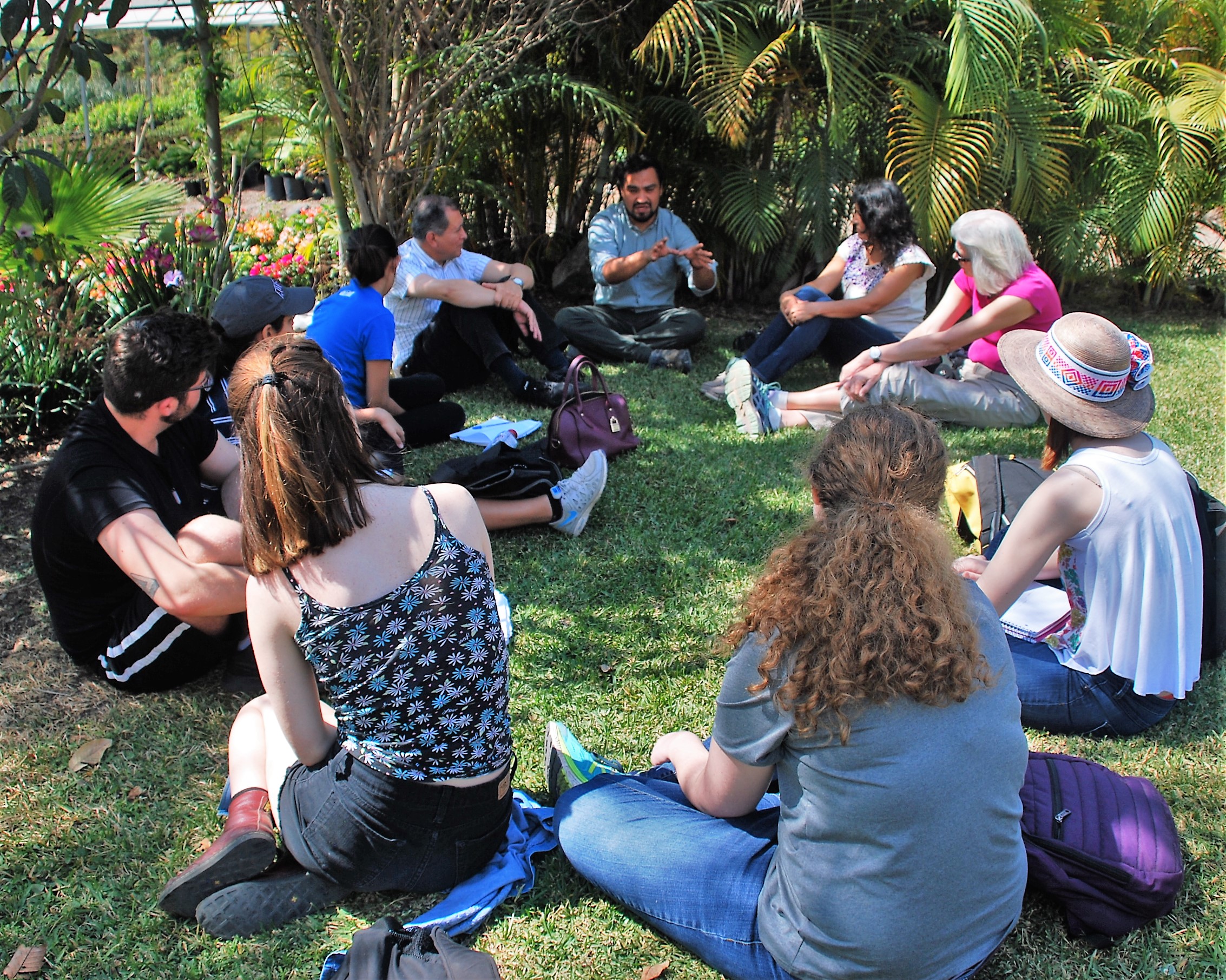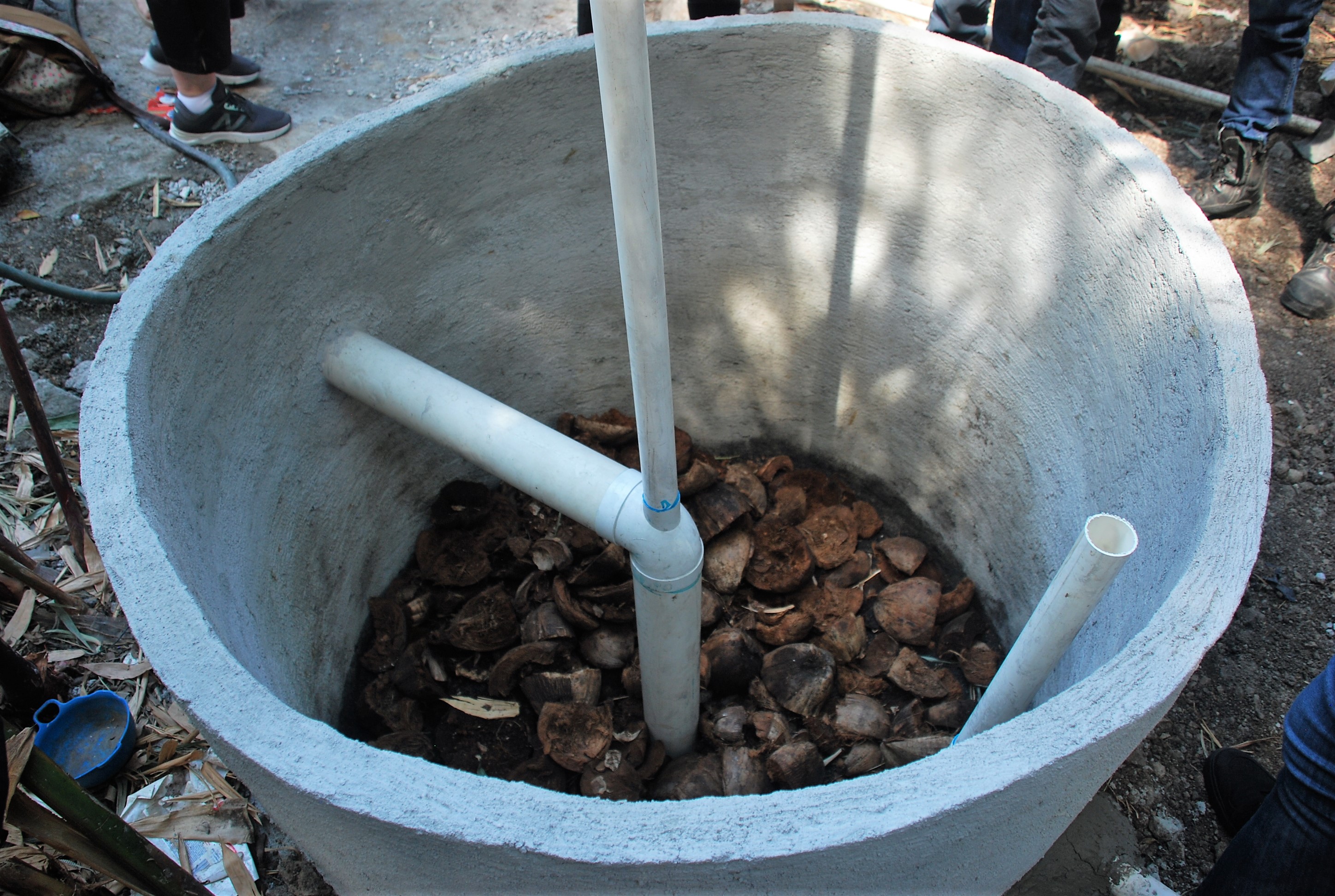On Tuesday, February 6th, we visited a small farming community in Jiutepec, just outside of Cuernavaca. It was quite a change driving through the city to the fields of greenery. At the farming site, we saw a range of flowers neatly nestled between one another. Bright flowers decorated the rows of endless plants and vegetation as we walked in. While there, we were able to meet with a representative from a nonprofit working to eliminate waste water pollution in the area. He was able to show us a few different eco-technologies he had helped install in the community, as well as the immediate effects that these installations were having on the pollution, farming, and health of the area. By seeing these technologies first hand, we were able to understand ways that local communities can take charge of protecting their own environment.

On a beautiful day, we sat down with the guest speaker to discuss environment-friendly methods of waste disposal
We looked at three different ecotechnologies that help manage waste water in the community. The first, called the “digester,” was used to treat sewage naturally. A large cement cylinder in the ground is created and layered with bricks, gravel, carbon, broken coconut shells, and soil through which sewage passes. After passing through these natural filters, water came out of the digester uncontaminated. Papyrus is planted in the system to draw up nutrients to complete this ecosystem. The first digester in Jiutepec had already been functioning without a hitch for two years! We also looked at a filtration system that involved passing grey water through three successive plant filtration beds. They said that these beds can be customized into various cement shapes so that they can be used in more urban settings as well. The last biotechnology we observed was and a “dry composting toilet,” which eliminated the need for waste water at all and provides fertilizer for plants. The immediate effects of these technologies were evident – the ravine that flowed from the area where these treatment processes had been installed was noticeably clearer and less polluted than another stream nearby.
Our tour guide also made it clear that the point of this project was to put environmental protection in the hands of the communities themselves. Although the nonprofit will only stay on site until June, a committee of local residents is ready to take up the work of installing these water treatment technologies elsewhere in the community. At that point, the nonprofit will travel to another area to help another community learn the importance of water treatment. This group is spreading awareness and action by harnessing the power of local communities and letting people take charge of their own environments. These actions supported the concept of a “hand up” versus receiving a “hand out” from this organization. These projects are empowering people and protecting the environment at the same time!

